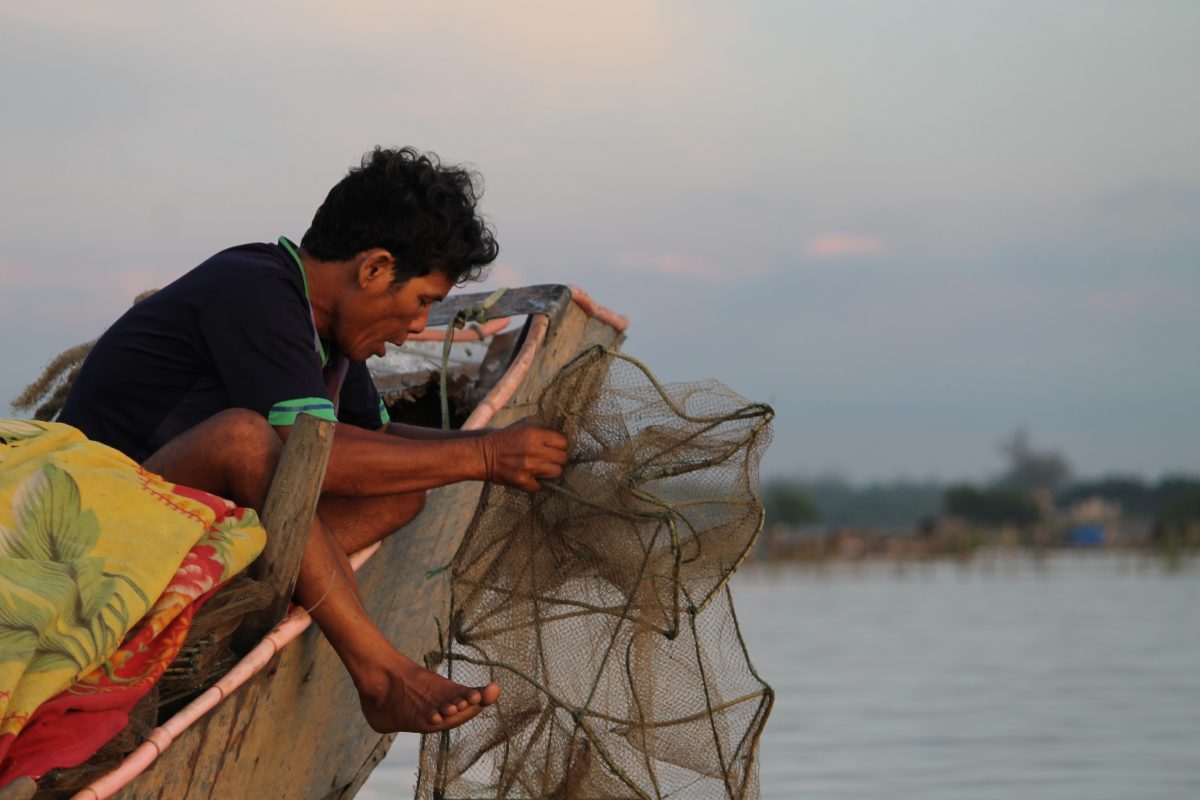One major focus area of the Climate-Adapted Local Development and Innovation Project is the conservation of the 22,000 hectares Tam Giang-Cau Hai lagoon, as a vital source of food and livelihoods for local people, as well as a potentially important economic asset for lagoon-based ecotourism in Thua Thien (TT) Hue province.
In the past, the area was ruled by an open-access fishery regime, based on the common saying “Điền tư, ngư chung” or “Farmland is private, but water area is open”. Local people competed for resources without taking adequate responsibility for protection. Issues of over-exploitation and illegal fishing rose and led to the degradation of lagoon resources, thus threatening the livelihoods of thousands of households, and inviting community conflicts.
Aligned with the Vietnamese Government’s policies and programmes for decentralization, introduced in 2003, VIE/033 supported community-based Fishery Associations (FAs) and relevant local government agencies to establish an efficient co-management model for the lagoon. Through Delegation Agreements signed with these agencies, and with technical and budget support from LuxDev, the counterpart was in the lead to implement a sizeable multi-year programme consisting of various activities.
The overall focus of the interventions was on strengthening the organizational and management capacity of FAs, and on raising the environmental awareness and increasing the knowledge and technical know-how of their members, the community and the local leadership, in order to look after the lagoon for the common good.

Specific project activities focused on the participatory formulation of local fishing regulations, the expansion of community-managed Fishery Conservation Zones (FCZs), capacity development in environmentally-friendly fishing practices, the protection of spawning grounds, and the establishment of patrol teams within FAs to monitor regulations and practices. As such, the project for example supported demarcation poles, signboards and fish aggregating devices to define the boundaries of the extended FCZs, which were stocked with various fish and crustacean species in order to improve the biodiversity and proliferation of adaptive species. Communities and authorities were also equipped with tools such as patrol boats and water quality testing equipment, to enable their supervision and monitoring tasks.
In September 2016, with project support, TT Hue province issued a decree formally adopting local regulations for fishery exploitation and management to be applied in the whole lagoon area. Further, in November 2017, based inter alia on the experience with the FAs in TT Hue, the National Assembly adopted the revised Law on Fisheries, including a new article that allows the co-management of natural resources.
As for the outcomes — 13 Fishery Associations had been established and/or strengthened and were granted the rights for fishing and co-management, and their capacity to do so markedly improved. The area earmarked by the government as Fishery Conservation Zone increased from 316 ha in 2014 to 567 ha in late 2017, surpassing the project’s initial target of a 50% expansion by project end.
FA members also noticed considerable change in the attitude of local people towards the management of aquatic resources.
Mr Le Thanh Nam, Chairman of the newly established Hai Phu FA in Phu Loc district: “CBOs such as FAs need the recognition and support of the authorities. Now we have a solid ground which has led to more mutual support and solidarity within the fishing community as well as towards the lagoon and environment we live in”.
The behavioral change and increasing respect for rules and boundaries by local households are also reflected in the data generated by the project’s monitoring system, e.g. the decrease in illegal fishing practices, the restoration of the ecosystem, or the measurable improvement in the quality of the lagoon water.
The above positive outcomes further highlight the importance to support Community-Based Organisations (CBOs) such as Fishing Associations in order to effectively adapt to climate change. They are a major partner of the Government in the protection and management of aquatic resources and play a crucial role in the implementation of community-based activities, thus contributing directly to delivering more secure livelihoods and a safe living environment for future generations.
Original source: Lux-Dev
Published on 21 March 2018

